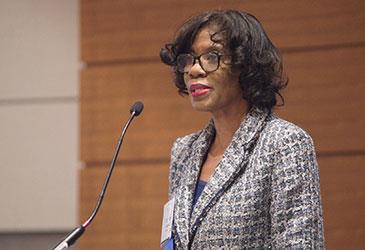 The nation has seen a four-fold increase in opioid deaths in the last decade, according to the Centers for Disease Control and Prevention (CDC)—and physicians stand on the front lines of this national health crisis. During the 2015 AMA Interim Meeting, physician experts recently discussed actions you can take now to help combat the opioid epidemic and improve patient care.
The nation has seen a four-fold increase in opioid deaths in the last decade, according to the Centers for Disease Control and Prevention (CDC)—and physicians stand on the front lines of this national health crisis. During the 2015 AMA Interim Meeting, physician experts recently discussed actions you can take now to help combat the opioid epidemic and improve patient care.
Rethinking prescribing practices, effectively using PDMPs
CDC Director Thomas Frieden, MD, was among a panel of experts who offered actionable solutions to help curb the nation’s high rate of opioid overdoses. He noted that the rise in opioid-related deaths and abuse directly correlates with an increase in the prescribing of opioids.
Unless physicians adopt improved practices for prescribing for pain, he said the nation will continue to struggle with addiction. That’s why he recommends that every physician should view prescribing an opiate as a “momentous decision,” in which they should carefully assess whether the opioid is an essential form of treatment.
One way physicians can better assess whether to prescribe an opioid is to effectively use prescription drug monitoring programs (PDMPs), said Sharon Meieran, MD, a lead physician from the Emergency Department for Emergency Psychiatric Services at Kaiser Sunnyside Medical Center in Oregon.
“Different specialties have their unique challenges, but we all share the common goal of wanting to take care of our patients and wanting to keep them safe, so we very much need the information that can be provided by the PDMP—and really at this point only the PDMP,” Dr. Meieran said.
She said using Oregon’s PDMP has effectively helped her monitor trends in opioid prescriptions and find important patient information—or spot any potential red flags in a patients’ history—before prescribing an opioid.
Dr. Meieran encouraged physicians to register for their state prescription drug monitoring programs and use them to help inform the risk-benefit analysis when considering to prescribe opioids for patients.
Reducing stigma to improve patient care
In addition to carefully monitoring opioid prescriptions, American Academy of Pain Medicine President-Elect Daniel Carr, MD, also stressed the importance of reducing stigma and bias against patients who may genuinely require opioid medications or other treatment for chronic pain.
Dr. Carr was the founding editor of Pain: Clinical Updates and noted that the journal already has received “84 citations on stigma alone in the last few years,” which underscores that stigma—often the result of wrongfully judging patients or harboring bias against them—is a deeply entrenched problem in health care that needs to be addressed.
“There is a huge [amount of] literature on stigma and pain,” he said, referencing a recent article that discussed stigma among sufferers of lower back pain. “Stigma is consistently experienced by such patients and propagated by health care professionals … the ramifications of stigma and discrimination are enduring, potentially disabling and interfere with care-seeking or rehabilitation participation and success.”
Dr. Carr reminded physicians that chronic pain is a public health issue He also encouraged physicians to educate themselves about stigma in pain medicine and unconscious bias to help advance patient care.
Richard Soper, MD, chief medical officer and director of addiction medicine at the Center for Behavioral Wellness in Nashville, Tenn., agreed with Dr. Carr that reducing stigma is key to improving care, especially among patients struggling with substance abuse and mental illness.
“The antidote for the toxic presence of stigma is proper medical treatment,” he said, noting that physicians must alter how they discuss addiction, mental health and treatment.
“We need some shifting in conversation and the verbiage amongst ourselves and the general public,” he said.
How physicians can advance opioid education and prescribing practices
Patrice A. Harris, MD (pictured above), chair-elect of the AMA Board of Trustees, who chairs the AMA Task Force to Reduce Prescription Opioid Abuse encouraged physicians also to study the best practices for prescribing opioids, managing pain and treating substance use disorder.
The task force offers a collection of the best educational resources from more than 70 organizations, including state medical associations and medical specialty societies.
“Challenge yourself and your colleagues to ensure they have the latest information about safe, effective prescribing,” Dr. Harris said.
She also urged physicians to adopt prescribing and co-prescribing the opioid overdose reversal drug naloxone to patients who are at risk. Dr. Harris noted, “It’s up to us to be the leaders our nation and our patients need to bring an end to this public health crisis.”




